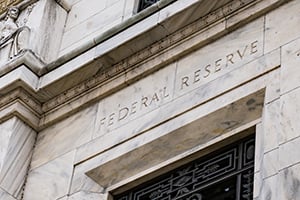 After yesterday’s piece on how many economic indicators are starting to move back to normal, it was nice to have the Fed ratify my point. The Fed has been buying $80 billion per month of Treasury securities and $40 billion per month of mortgage-backed securities. Yesterday, the Fed announced that, effective immediately, it would be cutting $10 billion per month from its Treasury purchases and $5 billion from the mortgage purchases for at least the next two months. Plus, it has the expectation that the drawdown will continue into next year—and possibly accelerate. This is a necessary first step in taking monetary policy back to normal.
After yesterday’s piece on how many economic indicators are starting to move back to normal, it was nice to have the Fed ratify my point. The Fed has been buying $80 billion per month of Treasury securities and $40 billion per month of mortgage-backed securities. Yesterday, the Fed announced that, effective immediately, it would be cutting $10 billion per month from its Treasury purchases and $5 billion from the mortgage purchases for at least the next two months. Plus, it has the expectation that the drawdown will continue into next year—and possibly accelerate. This is a necessary first step in taking monetary policy back to normal.
Markets React
While it is just a first step, the stock market seemed to welcome it, moving up after the announcement. A return to normal is something the Fed has been signaling for months. The fact that the Fed feels good enough about the economy—despite all the scary headlines—was seen as ratification that the recovery continues and that earnings growth should continue as well.
More, the fixed income markets also seemed to welcome the news. While there was a short-term bump in the yield of the 10-year U.S. Treasury security, to the upper end of the range for the past several days, that bump reversed this morning. We are now back at the lower end of the range for the last month. This is despite the fact that the market is now pricing in at least two rate increases next year. Clearly, the fixed income market is not expecting inflation to take off during that period, implicitly buying into the idea that inflation will revert to levels we saw before the pandemic. In other words, back to normal.
That applies to the longer term for rates as well. Rates are back to where they were at the end of 2019, but they were abnormally low then. If we go back to 2017 and 2018, rates for the 10-year were between 2 percent and 3 percent. If rates were to move back to that level, that too would be perfectly normal for the past five years.
The Long-Term Plan
And that gives us an idea of where the Fed is heading. Ultimately, it wants to get back to pre-pandemic normal, which would be in that five-year range. Now that it has started the process, removing monetary stimulus can proceed (the economy permitting) on autopilot. If the Fed can manage a smooth transition to rate increases once the bond buying is done, other things being equal, it could have up to six rate increases before getting back to the upper end of that range. The Fed will be measured and telegraph its plans, but you can see its long-term goal: to get back to normal.
The Good News
So, when you read the headlines about inflation and interest rates, keep that goal in mind. Rates will go up, over time, because rates should go up as the economy and financial markets return to normal. Normal is the goal here, and higher rates—and, for that matter, lower growth rates—will be a feature, not a bug. What the Fed told us yesterday is that it sees the economy as moving toward normal and that it now has to start responding. That is good news.


 Print
Print

